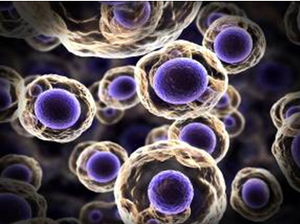The safety of granulocyte colony-stimulating factor (G-CSF; filgrastim) biosimilars was compared with that of the originator, Neupogen (Amgen), in a retrospective, single-institution study. Simona Bassi and co-authors at the Guglielmo da Saliceto Hospital in Piacenza, Italy, analysed data from patients with lymphoma or myeloma who had undergone autologous haematopoietic stem cell transplantation (HSCT) at the Guglielmo da Saliceto Hospital.
Safety of filgrastim biosimilars following stem-cell transplantation
Biosimilars/Research
|
Posted 07/08/2015
 0
Post your comment
0
Post your comment

Tevagrastrim and Zarzio
Data from 56 patients treated between 2011 and 2014 were included in the study. A total of 25 patients had non-Hodgkin’s lymphoma, 25 patients had multiple myeloma, and 6 patients had Hodgkin’s disease. Of these, 17 patients received Tevagrastrim (Filgrastim XM02) (Sandoz) and 39 patients received Zarzio (Teva) [1]. Although patients were administered different filgrastim biosimilars, the authors present the combined data because no difference was observed in the analysis of the two subgroups.
Filgrastim treatment is used to stimulate the bone marrow to produce neutrophils to fight infection in patients undergoing chemotherapy [2]. The dose administered in this study varied according to the patient’s diagnosis.
Similar safety profile
It has previously been suggested that no major differences in safety should be expected between the originator molecule and biosimilars given the equivalence of biosimilars in terms of pharmacokinetics, pharmacodynamics and mechanism of action [3].
Bassi and co-authors recorded no severe adverse events, and treatment never had to be interrupted during the study period. During post-transplant neutropenia 26 patients developed fever, which lasted a median of 2 days (range, 1‒7 days). Other complications, such as mucositis, were seen mainly because of high-dose chemotherapy. Extra-haematological adverse events that occurred included one episode of atrial fibrillation, heart congestion, flutter, toxic hepatitis and, in three patients, a symptomatic cutaneous rash.
The safety profile in this study did not show specific toxicities related to filgrastim biosimilars. Any adverse events observed were similar to those previously reported with the originator.
The authors conclude that the two filgrastim biosimilars used (Tevagrastim and Zarzio) were safe for facilitating bone marrow recovery in patients with haematological malignancies who underwent autologous HSCT. Prospective studies are now needed to confirm the results of this retrospective study.
The findings fall in line with a growing number of reports concluding that biosimilar G-CSF is as safe and effective in stem cell mobilization as the originator G-CSF [4].
Conflict of interest
The authors of the research paper [1] declared that they had no conflicts of interest.
Related articles
Efficacy of filgrastim biosimilars following stem-cell transplantation
Cost of filgrastim biosimilars compared to originator filgrastim
Use of G-CSF biosimilars for stem cell mobilization in healthy donors
Editor’s Comment
Readers interested in contributing a research or perspective paper to GaBI Journal – an independent, peer reviewed academic journal – please send us your submission here.
References
1. Bassi S, Stroppa EM, Moroni CF, et al. Safety and efficacy of granulocyte colony-stimulating factor biosimilars in engraftment after autologous stem cell transplantation for haematological malignancies: a 4-year, single institute experience with different conditioning regimens. Blood Transfus. 2015 Feb 2:1-6.
2. GaBI Online - Generics and Biosimilars Initiative. Biosimilars of filgrastim [www.gabionline.net]. Mol, Belgium: Pro Pharma Communications International; [cited 2015 Aug 7]. Available from: www.gabionline.net/Biosimilars/General/Biosimilars-of-filgrastim
3. GaBI Online - Generics and Biosimilars Initiative. Biosimilar filgrastim highly similar to originator filgrastim [www.gabionline.net]. Mol, Belgium: Pro Pharma Communications International; [cited 2015 Aug 7]. Available from: www.gabionline.net/Biosimilars/Research/Biosimilar-filgrastim-highly-similar-to-originator-filgrastim
4. GaBI Online - Generics and Biosimilars Initiative. Biosimilar G-CSF safe for mobilization of stem cells [www.gabionline.net]. Mol, Belgium: Pro Pharma Communications International; [cited 2015 Aug 7]. Available from: www.gabionline.net/Biosimilars/Research/Biosimilar-G-CSF-safe-for-mobilization-of-stem-cells
Permission granted to reproduce for personal and non-commercial use only. All other reproduction, copy or reprinting of all or part of any ‘Content’ found on this website is strictly prohibited without the prior consent of the publisher. Contact the publisher to obtain permission before redistributing.
Copyright – Unless otherwise stated all contents of this website are © 2015 Pro Pharma Communications International. All Rights Reserved.
News
FDA approves six denosumab biosimilars
EMA recommends approval for four biosimilars targeting three therapies
General
Samsung Bioepis wins Pyzchiva case; Regeneron patent rulings threaten foreign biosimilars
Chinese biosimilars go global: growth, partnerships, and challenges
What is the future for the US biosimilar interchangeability designation

Biosimilars/Research Posted 05/06/2025
Biosimilar clinical efficacy studies: are they still necessary?

Biosimilars/Research Posted 27/05/2025
The best selling biotechnology drugs of 2008: the next biosimilars targets








Post your comment